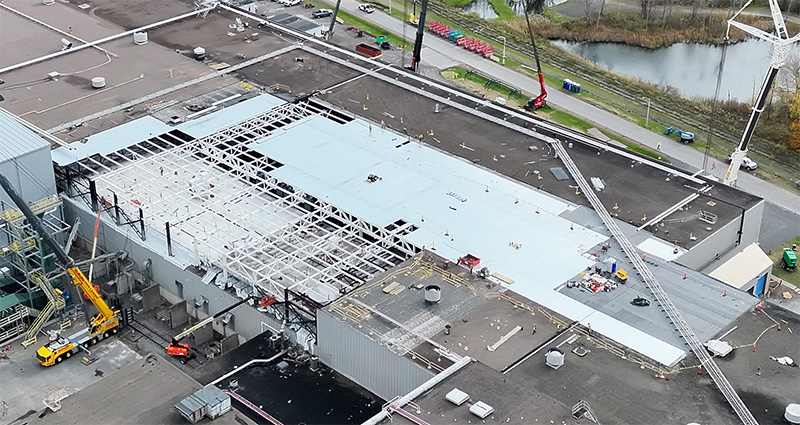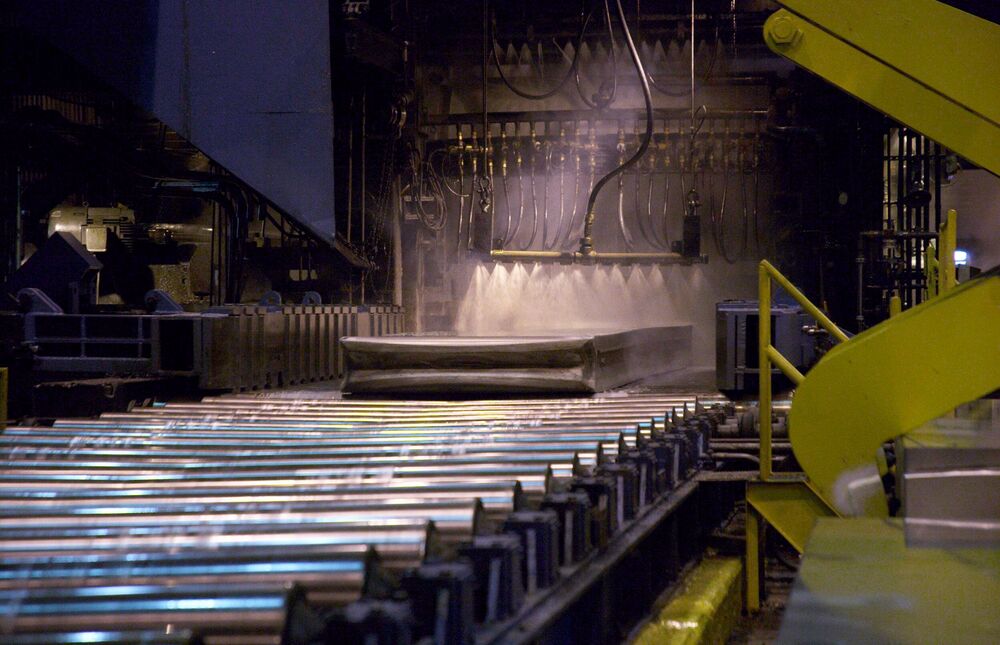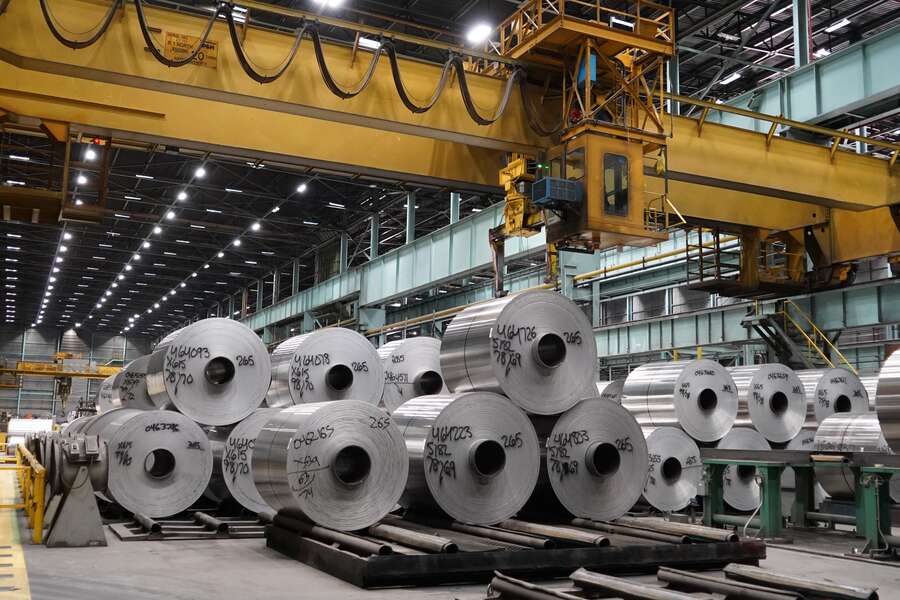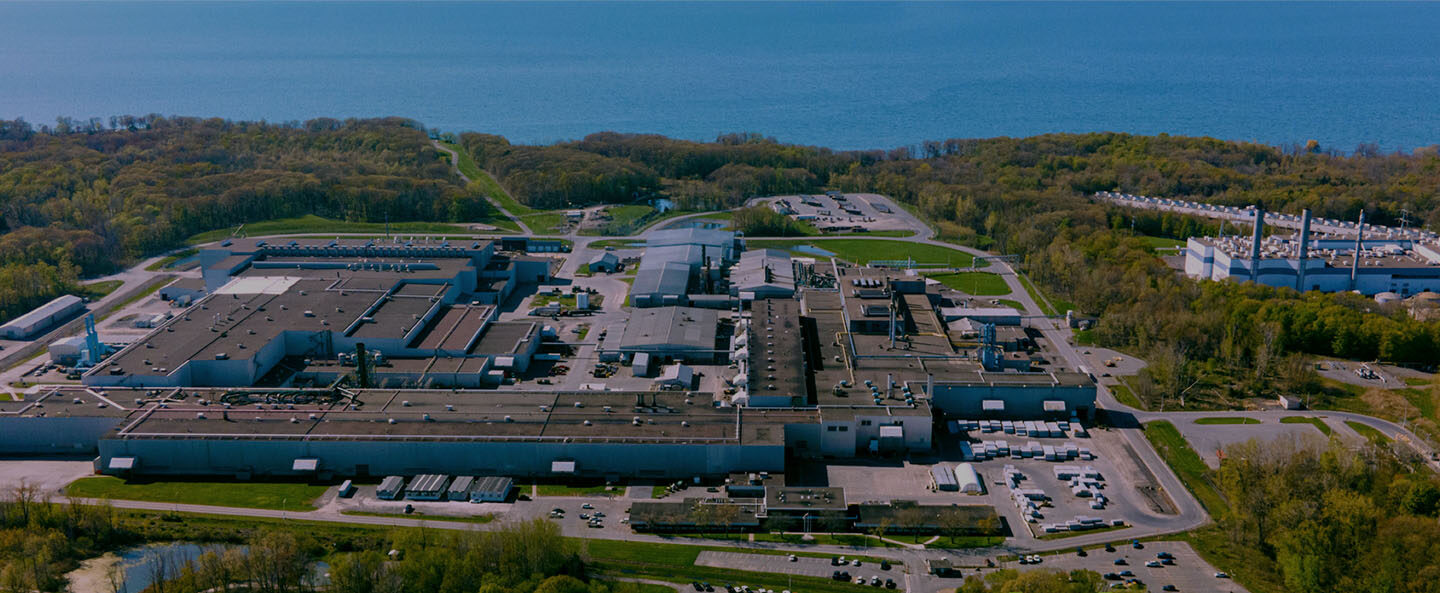Joint Statement from Ford Motor Company and Novelis
Nov. 21, 2025
DEARBORN, MICH. – Ford Motor Company and Novelis are providing an update following a fire incident at the Novelis Oswego aluminum plant on Nov. 20. The fire was swiftly contained and the plant was safely evacuated with no injuries to employees, contractors or first responders.
As of this morning, the cold mill and heat treatment operations at the Novelis Oswego plant are back up and running. The facility continues to ship finished material to supply Ford. Novelis will continue to leverage alternate sources, including its global network of plants and industry peers, to mitigate impact.
Meanwhile, Novelis is committing to strengthen the U.S. aluminum supply chain for its customers by building a new plant in Bay Minette, Alabama, which will begin commissioning in the second half of 2026.
Ford reaffirms its full-year 2025 adjusted EBIT guidance of $6 billion to $6.5 billion and full year adjusted free cash flow of $2 billion to $3 billion.
Novelis and Ford will continue to provide updates as further details become available.
Adjusted EBIT and adjusted free cash flow are non-GAAP financial measures. When Ford provides guidance for adjusted EBIT and adjusted free cash flow, the company does not provide guidance for net income or net cash provided by/(used in) operating activities, the respective most comparable GAAP measures, because they include items that are difficult to predict with reasonable certainty. See pages 75-76 of Ford’s Annual Report on Form 10-K for the year ended December 31, 2024, for the definitions of adjusted EBIT and adjusted free cash flow.
Cautionary Note on Forward-Looking Statements
Statements included or incorporated by reference herein may constitute “forward-looking statements” within the meaning of the Private Securities Litigation Reform Act of 1995. Forward-looking statements are based on expectations, forecasts, and assumptions by our management and involve a number of risks, uncertainties, and other factors that could cause actual results to differ materially from those stated, including, without limitation:
- Ford’s long-term success depends on delivering the Ford+ plan, including improving cost and competitiveness;
- Ford’s vehicles could be affected by defects that result in recall campaigns, increased warranty costs, or delays in new model launches, and the time it takes to improve the quality of our vehicles and services and reduce the costs associated therewith could continue to have an adverse effect on our business;
- Ford is highly dependent on its suppliers to deliver components in accordance with Ford’s production schedule and specifications, and a shortage of or inability to timely acquire key components or raw materials can disrupt Ford’s production of vehicles;
- Ford’s production, as well as Ford’s suppliers’ production, and/or the ability to deliver products to consumers could be disrupted by labor issues, public health issues, natural or man-made disasters, adverse effects of climate change, financial distress, production difficulties, capacity limitations, or other factors;
- Ford may not realize the anticipated benefits of existing or pending strategic alliances, joint ventures, acquisitions, divestitures, or business strategies or the benefits may take longer than expected to materialize;
- Ford may not realize the anticipated benefits of restructuring actions and such actions may cause Ford to incur significant charges, disrupt our operations, or harm our reputation;
- Failure to develop and deploy secure digital services that appeal to customers and grow our subscription rates could have a negative impact on Ford’s business;
- Ford’s ability to maintain a competitive cost structure could be affected by labor or other constraints;
- Ford’s ability to attract, develop, grow, support, and reward talent is critical to its success and competitiveness;
- Operational information systems, security systems, vehicles, and services could be affected by cybersecurity incidents, ransomware attacks, and other disruptions and impact Ford, Ford Credit, their suppliers, and dealers;
- To facilitate access to the raw materials and other components necessary for the production of electric vehicles, Ford has entered into and may, in the future, enter into multi-year commitments to raw material and other suppliers that subject Ford to risks associated with lower future demand for such items as well as costs that fluctuate and are difficult to accurately forecast;
- With a global footprint and supply chain, Ford’s results and operations could be adversely affected by economic or geopolitical developments, including protectionist trade policies such as tariffs, or other events;
- Ford’s new and existing products and digital, software, and physical services are subject to market acceptance and face significant competition from existing and new entrants in the automotive and digital and software services industries, and Ford’s reputation may be harmed based on positions it takes or if it is unable to achieve the initiatives it has announced;
- Ford may face increased price competition for its products and services, including pricing pressure resulting from industry excess capacity, currency fluctuations, competitive actions, or economic or other factors, particularly for electric vehicles;
- Inflationary pressure and fluctuations in commodity and energy prices, foreign currency exchange rates, interest rates, and market value of Ford or Ford Credit’s investments, including marketable securities, can have a significant effect on results;
- Ford’s results are dependent on sales of larger, more profitable vehicles, particularly in the United States;
- Industry sales volume can be volatile and could decline if there is a financial crisis, recession, public health emergency, or significant geopolitical event;
- The impact of government incentives on Ford’s business could be significant, and Ford’s receipt of government incentives could be subject to reduction, termination, or clawback;
- Ford and Ford Credit’s access to debt, securitization, or derivative markets around the world at competitive rates or in sufficient amounts could be affected by credit rating downgrades, market volatility, market disruption, regulatory requirements, asset portfolios, or other factors;
- Ford Credit could experience higher-than-expected credit losses, lower-than-anticipated residual values, or higher-than-expected return volumes for leased vehicles;
- Economic and demographic experience for pension and OPEB plans (e.g., discount rates or investment returns) could be worse than Ford has assumed;
- Pension and other postretirement liabilities could adversely affect Ford’s liquidity and financial condition;
- Ford and Ford Credit could experience unusual or significant litigation, governmental investigations, or adverse publicity arising out of alleged defects in products, services, perceived environmental impacts, or otherwise;
- Ford may need to substantially modify its product plans and facilities to comply with safety, emissions, fuel economy, autonomous driving technology, environmental, and other regulations;
- Ford and Ford Credit could be affected by the continued development of more stringent privacy, data use, data protection, data access, and artificial intelligence laws and regulations as well as consumers’ heightened expectations to safeguard their personal information; and
- Ford Credit could be subject to new or increased credit regulations, consumer protection regulations, or other regulations.
We cannot be certain that any expectation, forecast, or assumption made in preparing forward-looking statements will prove accurate, or that any projection will be realized. It is to be expected that there may be differences between projected and actual results. Our forward-looking statements speak only as of the date of their initial issuance, and we do not undertake, and expressly disclaim to the extent permitted by law, any obligation to update or revise publicly any forward-looking statement, whether as a result of new information, future events, or otherwise. For additional discussion, see “Item 1A. Risk Factors” in our 2024 Form 10-K Report, as updated by our subsequent Quarterly Reports on Form 10‑Q and Current Reports on Form 8-K.

The fire started around 8:45 a.m. today.
Everyone working at the plant was safely evacuated and fortunately, there were no injuries.
Multiple local fire departments responded, and the fire is now out. Crews remain on site to monitor.
A fire started at Novelis’ Oswego, New York, plant this morning. Everyone working at the plant was safely evacuated. Multiple local fire departments responded, and the fire is now under control. Crews are still on site to ensure it is fully extinguished.

Novelis is making substantial progress in the recovery and rebuilding of the Oswego plant’s hot mill. We remain on track to restart the hot mill by the end of December 2025.
Major reconstruction milestones have been achieved, including completion of all roof trusses, columns, roof decking, and ductwork. The roof above the shipping area, hot mill, and motor room is finished. Meanwhile, we continue with installation of X-bracing along the mill bay and sections of the hot mill fume exhaust.
Access to the hot mill and cellars has largely been restored, with pumps and motors being reinstalled. Critical cable, conduit, and switchgear work continues.
We thank our employees, customers, suppliers, and other partners for their continued support and collaboration throughout the recovery process.

Novelis continues to make substantial progress in Oswego recovery efforts following a fire in mid-September and expects to restart the plant’s hot mill by the end of December 2025. Since the fire, our focus has been on ensuring the safety of our people, swiftly restoring the hot mill in order to bring the site back to full operations, and sourcing alternate material to serve our customers.
We are dedicating the full strength of our resources to restore the hot mill. With the help of on-site stadium lighting, work to repair the roof and adjacent structural damage continues 24/7.
We have also installed new roof trusses, procured all the nearly 7,000 parts needed for repairs, and continued large-scale cleaning across the facility.
We regret the impact this is having on our customers, and we are continuing to take steps to minimize disruption. To do this, cross-functional teams have been working diligently to identify and qualify other avenues of supply from Novelis plants around the world, as well as industry peers, to ensure consistent quality and delivery.

Novelis now expects to restart its hot mill in Oswego by the end of December 2025. This is an acceleration of our previously anticipated timing of Q1CY26.
We are dedicating the full strength of our resources to recovery and working 24/7 to restore the hot mill and repair the building. We have made considerable progress over the past few weeks, which has allowed us to accelerate our timing.
We regret the impact this is having on our customers, and we are continuing to take steps to minimize the impact on their operations.
Recovery Progress – Hot Mill
We continue to increase safe access to the hot mill, which has allowed us to better evaluate damage to the equipment. All motors from the hot mill are being inspected and will be reinstalled and tested after any needed repairs.
A large-scale scaffolding project was constructed to facilitate removal and assessment of the hot mill’s major electrical components.
Novelis Procurement teams are working with extreme urgency to order and receive parts needed to repair the mill. Of the 2,455 uniquely affected hot mill parts, approximately 1,900 are already on hand. The others are being ordered and received on-site.
Recovery Progress – Roof/Building
Work to repair the roof and adjacent structural damage began on October 8. Leading up to this, all ductwork was removed, and a 500-ton crane was brought onsite. Additionally, stadium lighting was brought onsite to allow roof repair and rebuild work to take place 24/7.
On Wednesday, October 22, we began installing new trusses (see photos) for the portion of the roof that is being rebuilt, which is about 40,000 square feet, out of a total roof surface of nearly 1.5 million square feet.
All of the water that was used to put out the fire, which was nearly 5 million gallons, has been removed from the facility.
Basements are 85% cleaned and accessible; large-scale cleaning continues throughout the plant zone-by-zone.
Plant Operations
We recently restored power to the Recycling/Ingot Casting area of the plant. As of today, the following production areas are operational: Recycling/Ingot Casting, Cold Mill, Finishing.

A small fire occurred during roof repair work at Novelis’ Oswego, NY, plant on October 10 just after midnight, but was quickly extinguished. Nobody was injured and work on the roof continued after the fire was extinguished. The incident was minor and will not affect the recovery timing for hot mill operations, which is expected in early Q1 CY 2026.

We are urgently taking steps to minimize the impact of the recent fire at our Oswego facility on our customers.
We have activated Novelis’ global network of plants and are also partnering with industry peers to source material in order to help mitigate the gap in supply.
At the same time, we are working around the clock to restore the Oswego facility’s hot mill. Based on what we know today, we expect the hot mill to be back in operation in early Q1 of calendar year 2026.

Around 10:00 p.m. on Tuesday, September 16, a fire broke out at our Oswego plant.
Fortunately, no injuries resulted from the fire or the efforts to put it out, which was mainly complete around 2:00 a.m. on the 17th.
Damage from the fire was localized to the hot mill area but other production centers were temporarily impacted due to various reasons, mainly water.
The Cold Mill and Finishing areas are back online and operational, while power is being restored to the Remelt/Recycle area, which is expected to restart soon.
Structural damage from the fire is limiting our ability to fully assess the Hot Mill equipment at this time. Work to stabilize the structure in order to gain access to the hot mill is near final.
Recovery of the Hot Mill is expected in Q1 of calendar 2026.
We are coordinating with Novelis plants worldwide to source material and minimize customer interruptions as much as possible. The cause of the fire is still being investigated.
Our team will be working around the clock to restore the plant to full operation as safely and quickly as possible.

- The Oswego, New York, location represents Novelis’ first U.S. operation and stands today as the company’s largest, wholly owned fabrication facility in North America.
- Equipped for aluminum scrap remelting/recycling, ingot casting, hot and cold rolling and finishing.
- The plant employs approximately 1,100 individuals.
